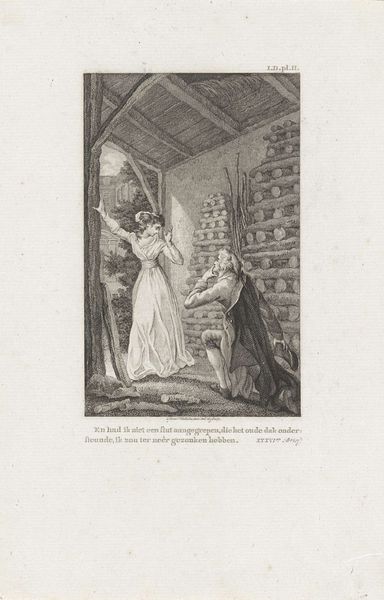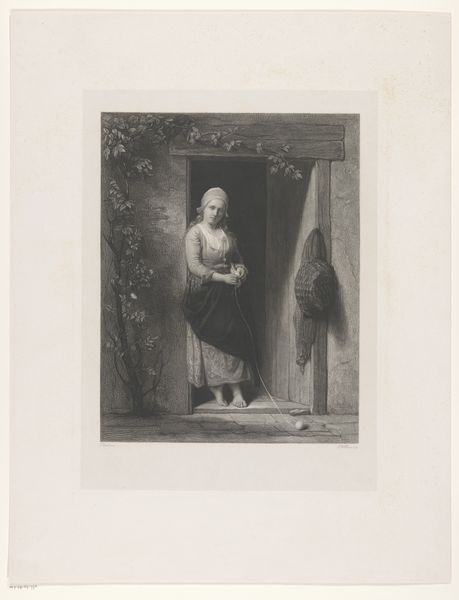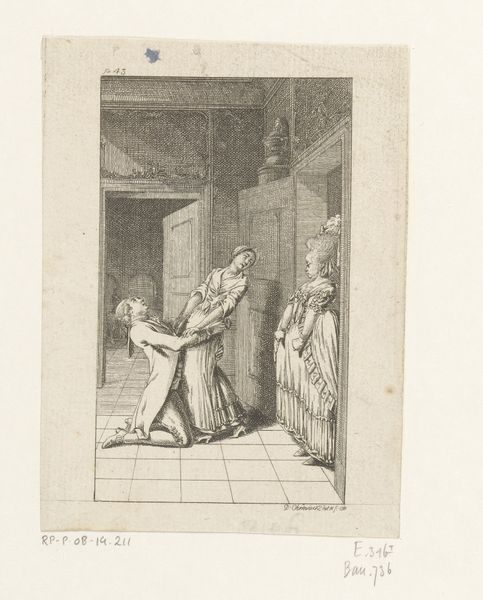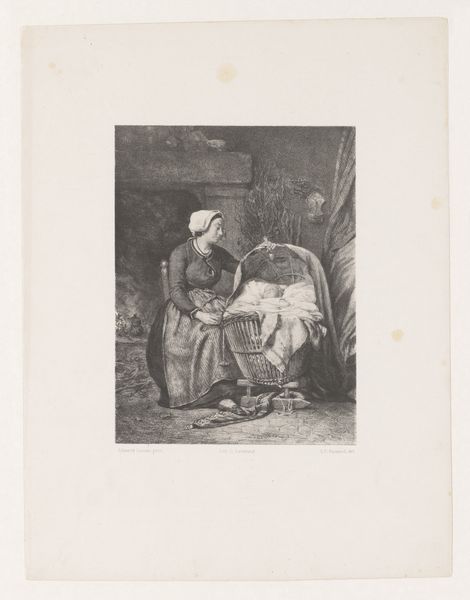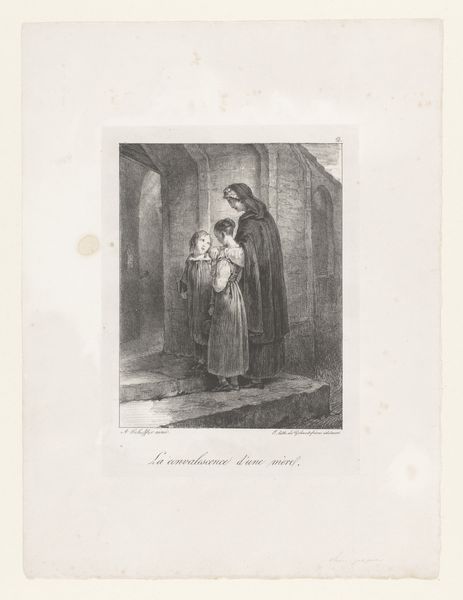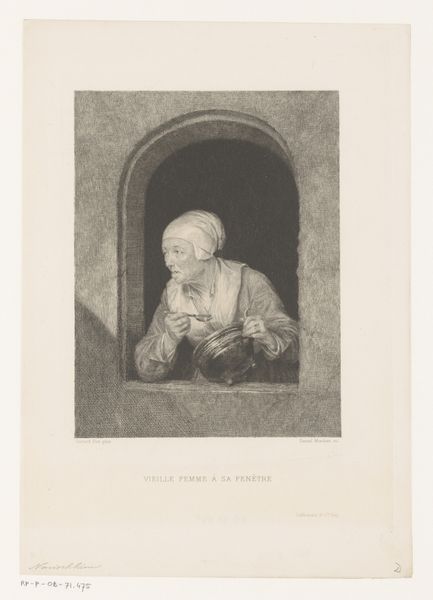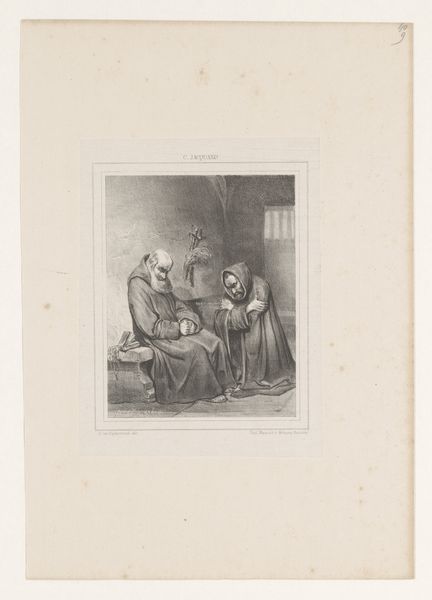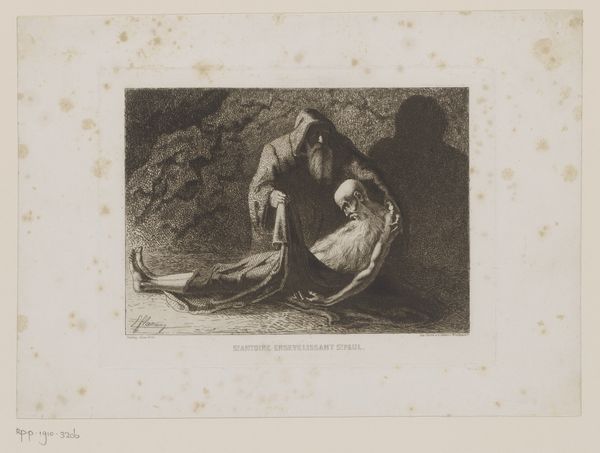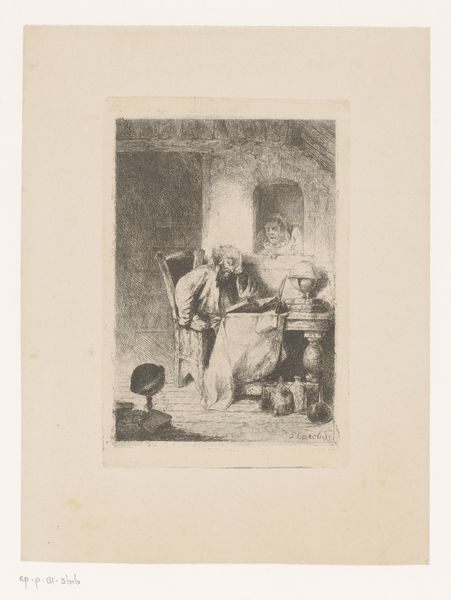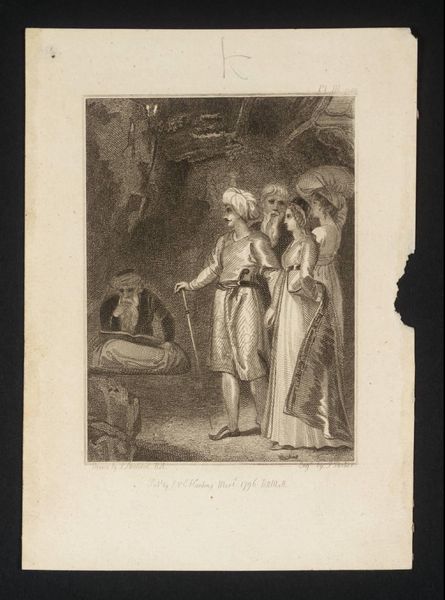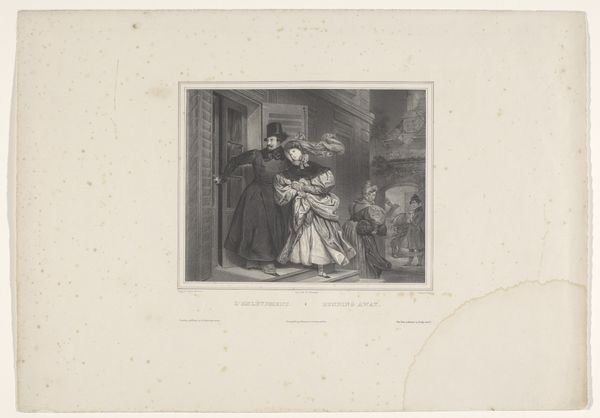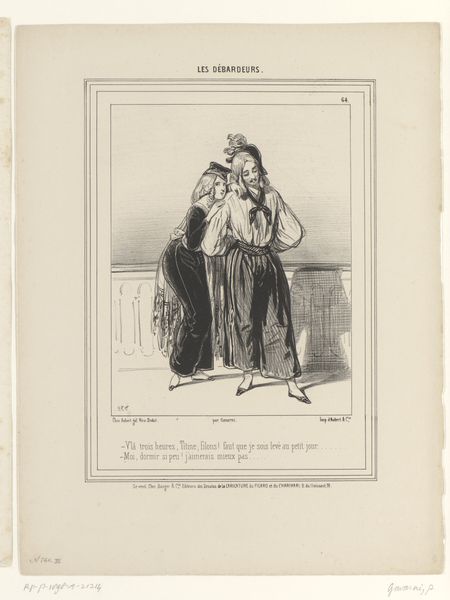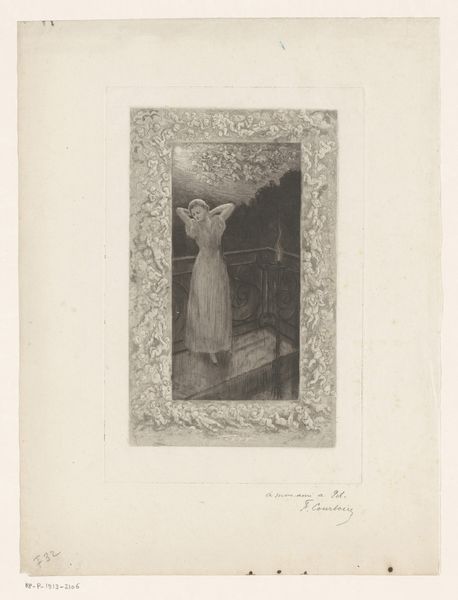
lithograph, print
#
narrative-art
#
lithograph
# print
#
caricature
#
figuration
#
romanticism
#
genre-painting
#
monochrome
Dimensions: height 255 mm, width 199 mm
Copyright: Rijks Museum: Open Domain
Curator: This lithograph, dating back to 1835, is titled "Man klopt aan de deur van een huis" ("Man knocks on the door of a house"), a work attributed to Paul Gavarni. Editor: My first thought is that there's a distinct sense of anticipation here, or maybe even apprehension. The figure seems hunched, as if trying to remain unseen while carrying something bulky and awkwardly towards that doorway. Curator: That's interesting, given the context we can discern. This piece, currently held in the Rijksmuseum, appears to capture a fleeting moment rooted in the sociopolitical currents of 19th-century France. Genre paintings often provided subtle commentary. The narrative may reflect someone approaching seeking entry or aid during periods of upheaval. Editor: Absolutely. I notice the detail in the clothing, suggesting a certain social stratum – possibly a rural, working-class figure. The monochromatic tones create a somber, almost urgent mood, further accentuated by the bare, overgrown surroundings. Are those thorns creeping across the door? And what of the object in their hand, like a key or tool? Curator: Good eyes, you noticed the key, too. The surrounding, rendered in such high contrast of black and grey is representative of Romanticism; a visual vocabulary, rife with themes of longing and escape, further underscored in Gavarni's choice of subject. Consider that within burgeoning cities and industries, people grappled with questions of national identity and belonging. Editor: The key definitely adds to the symbolic weight. Doorways are often thresholds, and keys signify access to what’s hidden. Is this an honest arrival, or something less so? What burdens does this individual carry? What cultural memory does such a scene tap into? Curator: By looking at how such scenes of hardship can inform gender or race at this particular time might allow new entry into broader and urgent societal concerns. Editor: Exactly. Art can unveil shared vulnerabilities in surprising ways, prompting necessary dialogue on shared histories of inequality. Curator: A powerful testament to the subtle resistance and human tenacity interwoven throughout seemingly quotidian realities. Editor: Yes, the scene underscores a quiet but forceful symbolism embedded in even the humblest of moments.
Comments
No comments
Be the first to comment and join the conversation on the ultimate creative platform.
